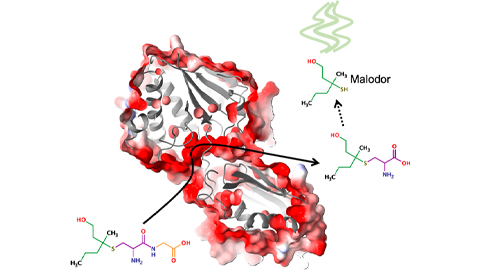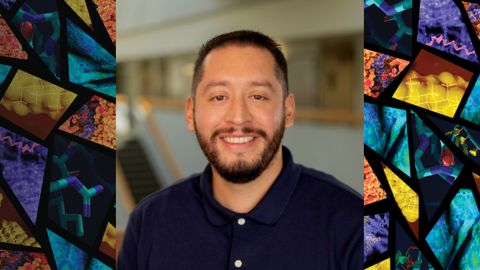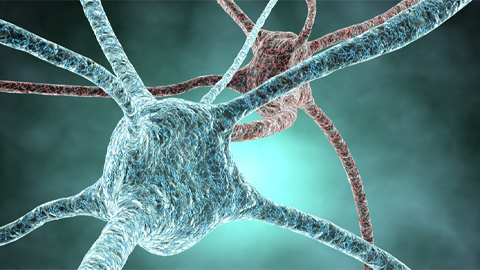Still a lot to learn
Coming down with a viral infection can be agonizing enough as is; however, for a very small population of people it can be much more disastrous. Acute necrotizing encephalopathy is a rare disease that is secondary to viral infections and results in rapid brain deterioration. Today is its awareness day.
ANE symptoms include that of a typical infection such as fever, cough, congestion, vomiting and diarrhea; however, ANE’s pathogenesis is heavily dependent on the neurological impairments caused by unique brain injuries that cause seizures, hallucinations and ataxia.
Multifocal, symmetric brain lesions are a hallmark of ANE and can be visualized by MRI. Development of lesions in the bilateral thalimi is the most common pathology, but injuries in the brain stem, cerebral white matter and cerebellum can also occur.
Progression of ANE causes brain regions to swell and hemorrhage, which then leads to areas of necrosis resulting in encephalopathy. Eventually, patients can go into a coma, which can last for weeks.
Approximately one-third of patients diagnosed with ANE do not survive the illness. Half of those who do survive experience permanent brain damage, which can impair basic life activities such as walking, talking and other functions.
What we know
ANE was first recorded in 1995 in previously healthy Japanese and Taiwanese children. During the early days, it was initially suspected that ANE was related to geographical factors, but increasing numbers of diagnoses in Western countries, including in adults, quickly refuted that theory.
Today we know that there are two types of ANE: isolated and familial. Isolated ANE, the most common form, is sporadic and nonrecurrent. Familial ANE, also called ANE1, is rarer and recurrent.
ANE has gained some research attention, but it’s no secret that rare diseases often suffer from lack of awareness, ANE being one of them. As a result, ANE is often underdiagnosed.
Some patients with familial ANE have a genetic predisposition for a mutation in the gene encoding RAN binding protein 2, which is involved in numerous functions of the cell cycle and resides on the cytoplasmic surface of the nuclear pore. Mutations in RANBP2 may affect mitochondrial intracellular trafficking, energy production and lipid peroxidation.
However, RANBP2 mutations are present in only about 75% of patients with familial ANE, and there lies a gap in knowledge as to what other genes may be involved in other patients.
Influenza and human herpesvirus 6 are the most common viruses to precede ANE, but others include parainfluenza, varicella, HHV-7, enterovirus, novel reovirus train, rotavirus, rubella, coxsackie A9, measles and COVID-19.
While it’s clear that viral infections play a role in the onset of ANE, the exact mechanisms have not been elucidated. One of the prevalent theories is the so-called cytokine storm that often accompanies viral infections and the systemic immune imbalance that is observed in patients with ANE. The inflammation that comes from cytokine storms results in an array of effects throughout body, including impairment of the blood–brain barrier and brain injury.
The immune system’s role continues to be a focus of ANE research. Several studies show elevated levels of cytokines in the serum and cerebral spinal fluid in patients with ANE, including interleukin-6, which is known to be neurotoxic.
What can be done
Currently, there are no treatment options for patients with ANE.
Like other emergency illnesses, the success of ANE recovery and outcome can be heavily dependent on how quickly patients receive medical intervention.
Other than symptomatic treatment using antivirals and intensive care, specialists have tested their luck with immunomodulatory agents. Some patients have benefited from glucocorticoid therapy, including methylprednisolone and dexamethasone, which act to suppress the cytokine storm and inflammation.
Therapeutic hypothermia, a process that lowers body temperature to reduce injury, has shown significant advantages in children when initiated within 12 hours of disease onset.
Enjoy reading ASBMB Today?
Become a member to receive the print edition four times a year and the digital edition monthly.
Learn moreGet the latest from ASBMB Today
Enter your email address, and we’ll send you a weekly email with recent articles, interviews and more.
Latest in Science
Science highlights or most popular articles

Cracking cancer’s code through functional connections
A machine learning–derived protein cofunction network is transforming how scientists understand and uncover relationships between proteins in cancer.

Gaze into the proteomics crystal ball
The 15th International Symposium on Proteomics in the Life Sciences symposium will be held August 17–21 in Cambridge, Massachusetts.

Bacterial enzyme catalyzes body odor compound formation
Researchers identify a skin-resident Staphylococcus hominis dipeptidase involved in creating sulfur-containing secretions. Read more about this recent Journal of Biological Chemistry paper.

Neurobiology of stress and substance use
MOSAIC scholar and proud Latino, Bryan Cruz of Scripps Research Institute studies the neurochemical origins of PTSD-related alcohol use using a multidisciplinary approach.

Pesticide disrupts neuronal potentiation
New research reveals how deltamethrin may disrupt brain development by altering the protein cargo of brain-derived extracellular vesicles. Read more about this recent Molecular & Cellular Proteomics article.

A look into the rice glycoproteome
Researchers mapped posttranslational modifications in Oryza sativa, revealing hundreds of alterations tied to key plant processes. Read more about this recent Molecular & Cellular Proteomics paper.

